The importance of investing in golf course design
Related Articles
Getting a golf club’s greenkeeping team to carry out construction jobs in-house can and does save money, but, as Richard Allen, CEO of EcoBunker details with two case studies, this is not always the case – professional golf designers can save you thousands
If buying car insurance was not a legal requirement, how many drivers would take the chance and drive without a policy, or perhaps save a few pounds on a third party policy for a £30,000 vehicle? Yes, almost everyone moans about their annual renewal statement, but I suspect that no sensible person would forego insurance or knowingly buy a completely inadequate level of cover. We all know that driving is a risky business, and events (sometimes beyond our control) can have major legal and financial implications. Insurance is essential to cover the significant risks associated with motoring.

What about construction? I think it is widely accepted to be a relatively risky activity. Despite great improvements over the years, statistics still show it to be one of the more dangerous industries to work in, and other significant risks are associated with programme, budget overruns, environmental impact to name just three. How does the construction industry eliminate or reduce the risks associated with projects? The answer is insurance by good design.
I am a civil engineering designer and it took me quite a long time to grasp this concept. Good design is actually a tool, probably the best tool in my opinion, for reducing construction risk. Aesthetics, which is what most people associate with design, is usually just one part of a much bigger design process. In my sector, I was responsible for designing flood defences and drainage systems to ensure that the risk of flooding to new developments was reduced to an acceptable level. Other construction design professionals might design a clever, fast construction method shortening a build period so it can be done in summer months only, and avoid the risks associated with poorer winter weather conditions. The list is almost endless, and to emphasise the point, the Health and Safety Executive recognises the role that design plays in safety through the Construction (Design and Management) Regulations, proving that design decisions, even at the very earliest stages of a project, have a major impact upon safety and construction risk. Designs costs are tiny (typically three to six per cent of the contract value, and very rarely exceeding 10 per cent) but the value of good design is enormous.
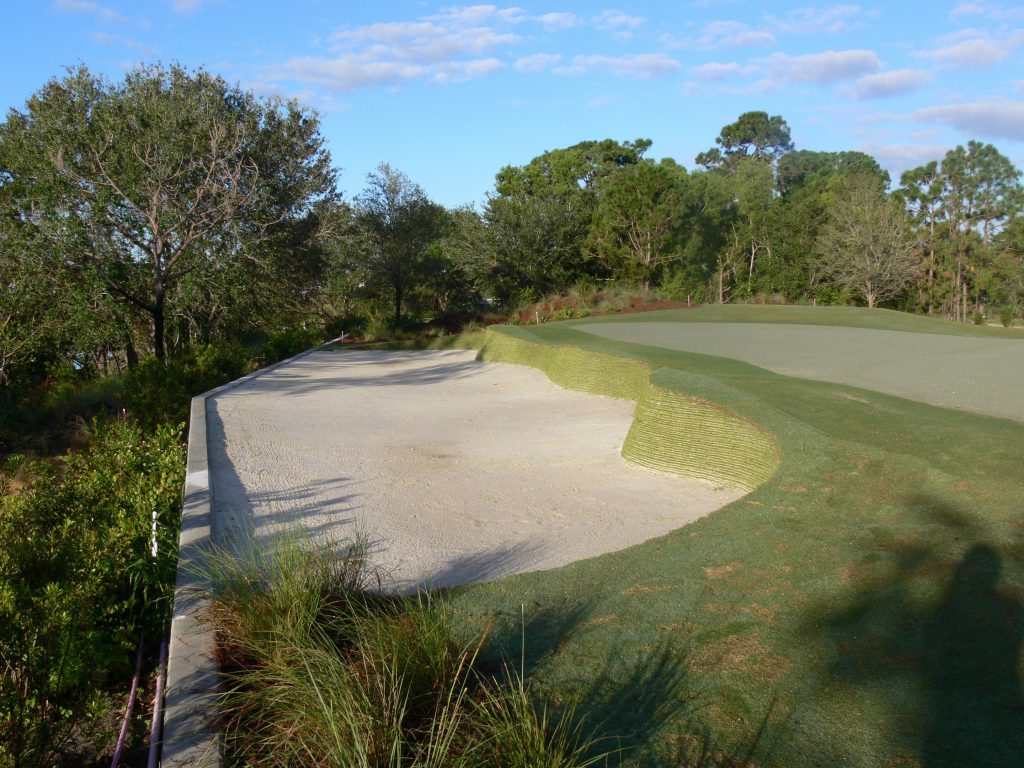
How is this relevant to golf? I shall let legendary golf course architect Dr Alister Mackenzie provide the first answer: ‘Every golfer knows examples of courses which have been badly constructed and re-arranged over and over again, and the fact that all over the country thousands of pounds are frittered away in doing bad work which will ultimately have to be scrapped is particularly distressful to a true economist,’ Golf Course Architecture, 1920.
This has finally brought me to the point: Where golf courses undertake construction work in-house, in my experience, there is very often little or no true design work. My question is: When undertaking work in-house, that is precisely when the golf club is taking on all the risk, so why not mitigate that risk by investing a modest sum towards good design? Let me provide two contrasting examples from my personal experience:
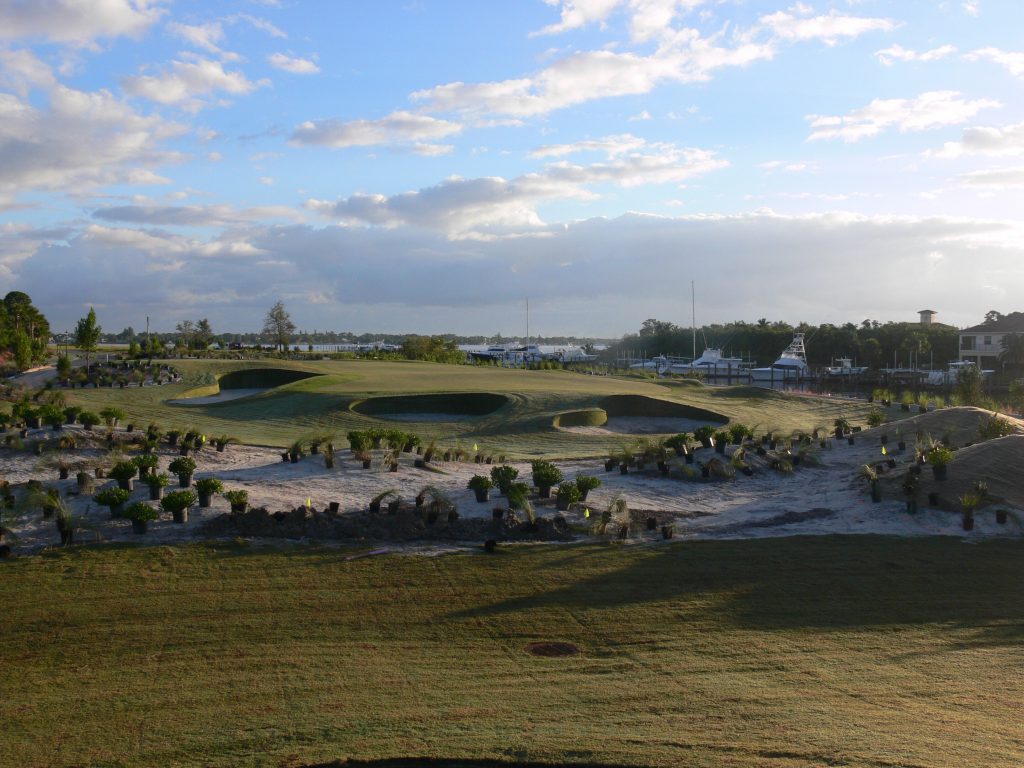
In the mid 1990s a dream of mine was realised when I got the opportunity to design a completely new golf hole. It was a par three to be played from an elevated tee over a pond to be formed by impounding a natural stream. I did the surveying, all the concept design and added enough detail to successfully negotiate a planning consent and all the necessary environmental permits. However, the level of detail, as is normal for a planning submission, stopped short of full detailed design for construction.
In the event, the project was delayed for a few years due to other spending priorities, and in the meantime my career opportunities meant that I moved away from the area and that golf club. When I returned to the club several years later, the hole had been constructed, and although it was generally very popular, there was a stubborn boggy area to the left of the green which could not be solved. It was really spoiling the hole. The club captain at the time knew I specialised in drainage design, told me that there had been several failed attempts to resolve the issue and asked me if I could do anything to help. I quickly found out that no design plans had ever existed, and that construction had been done in-house. To be fair, most to the work was of a very high quality, especially the pond construction. However, the elevated green (about one metre above existing ground level) was constructed at the lower end of a long slope, which was saturated for several months each year, and generated a lot of surface and sub-surface water flow. The builders, working without a detailed level of design, had inadvertently constructed a dam, and surface water meeting the high side of the new green had nowhere to go.
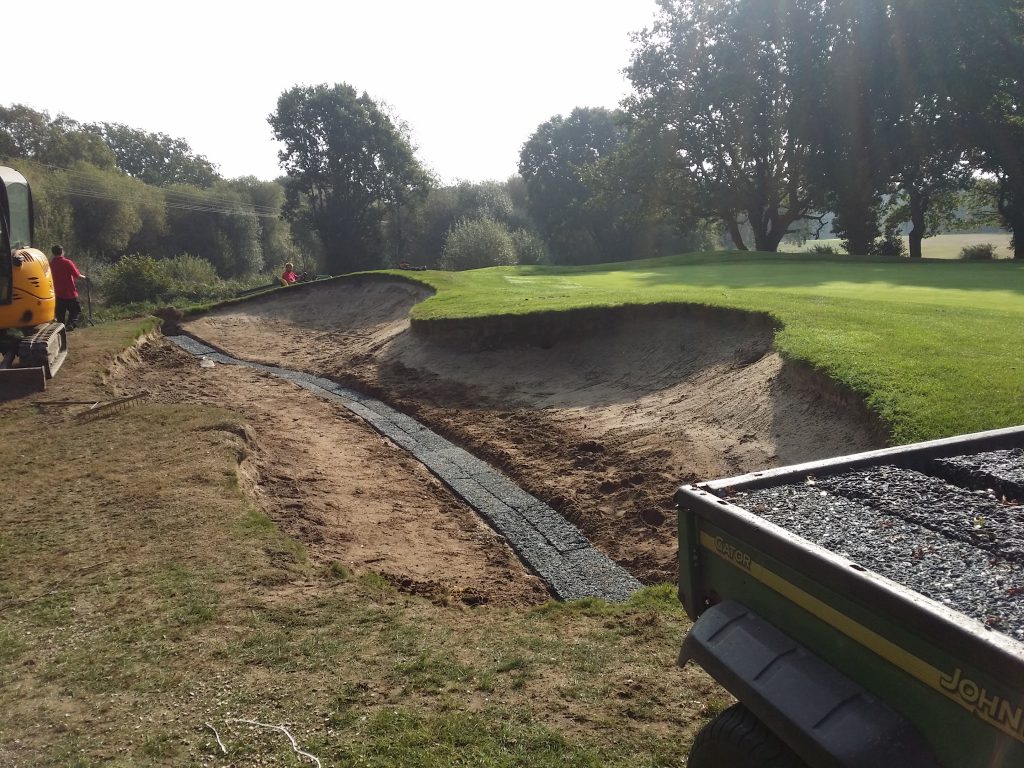
The design solution was inexpensive and very effective, and as luck would have it, was judged by the STRI to be the ‘Water Management Project of the Year’ as part of the annual Golf Environmental Awards. However, the lesson I learned from this was that the lack of a design had resulted in club members putting up with sub-standard conditions for over seven years, many man hours wasted on failed attempts to resolve the issue, disruption during the repair works and the expenditure of several thousand pounds on the ultimate solution. Outsourcing the design of the new green to a suitably qualified person would have ‘insured’ the golf club against all ramifications.
The second project example illustrates how by outsourcing the design and construction of a project, a golf club avoided the risks associated with a particularly difficult engineering challenge.
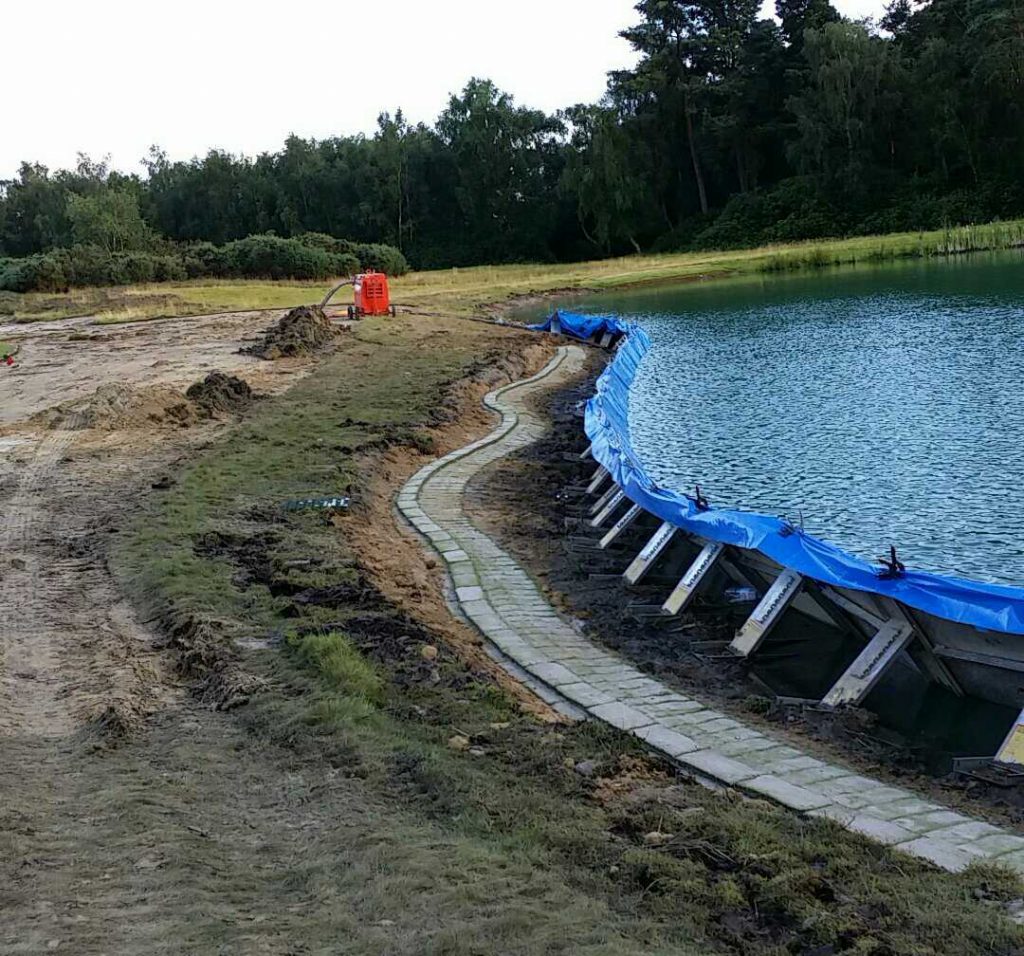
The very first ‘design and build’ project I undertook was a drainage project at Pyle and Kenfig GC in South Wales. A prestigious links course, ‘P&K’ had one very persistent drainage problem on the 10th fairway, and they decided to outsource the works to a contractor. The company that I was a director of won the tender. I surveyed the site in detail, designed the solution and organised the construction work. Everything went perfectly until our hired-in mini trencher (which works perfectly on all other links golf course type soils) started hitting large rocks and boulders at very shallow depths. The mini trencher was not fit for the ground conditions, and a change of plan was forced, which demanded different construction plant, more labour and an increase in material quantities. The completed work was a resounding success, and the design has ensured that the fairway continues to drain very well for the eight years since this project.
The lesson this time is that the golf club made an excellent decision to outsource the design and build. If the work had been attempted in-house, the additional costs, which would have been almost unavoidable, would have been borne by the golf club. I don’t mind admitting that my site investigation missed the shallow boulders, even though it ended up costing me some. It was a very unlucky oversight, but it was an excellent lesson to learn, and I am a better designer for that experience, enabling our team to now tackle much more complex projects such as those Aquaedge designs at Queenwood, Lignano (Italy) and Pinnau (Germany).
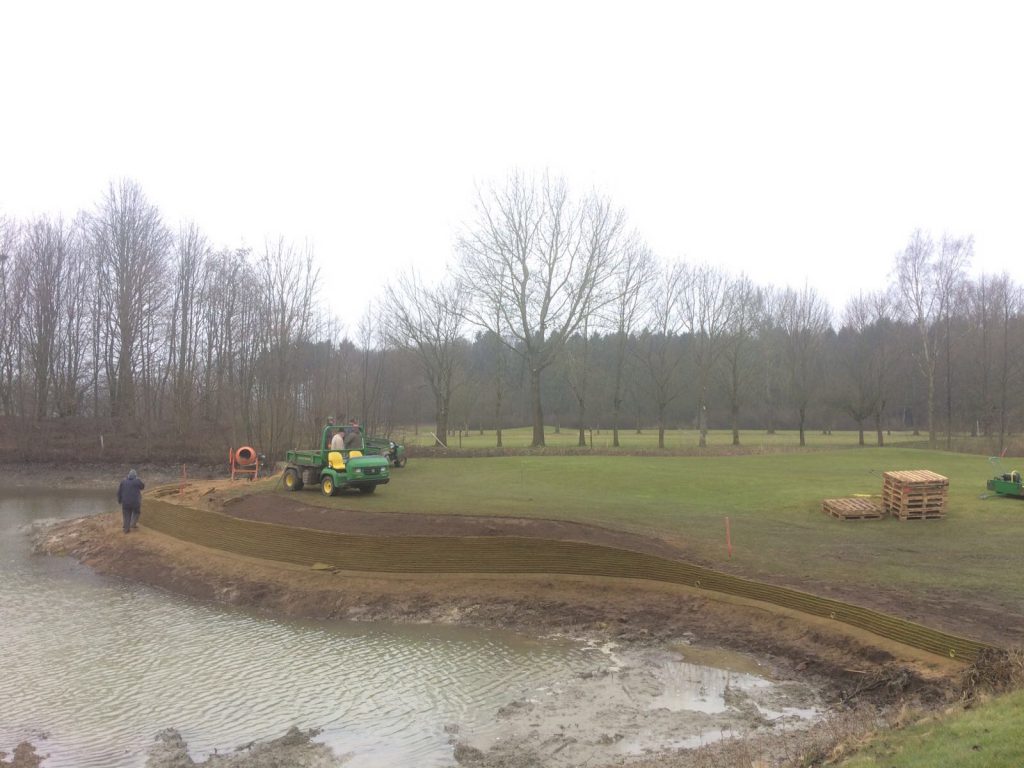
As you will probably have guessed, I am a passionate advocate of good design. I, and my whole team at EcoBunker are also keen to enable golf clubs, where possible, to undertake works in-house, using their own resources. Wherever possible we try to emphasise that good design is NOT a cost; it is an investment and an insurance policy rolled into one. By design, it is possible to ‘build it once’ and I’m confident that Mackenzie, arguably the greatest golf course designer, would agree.

























